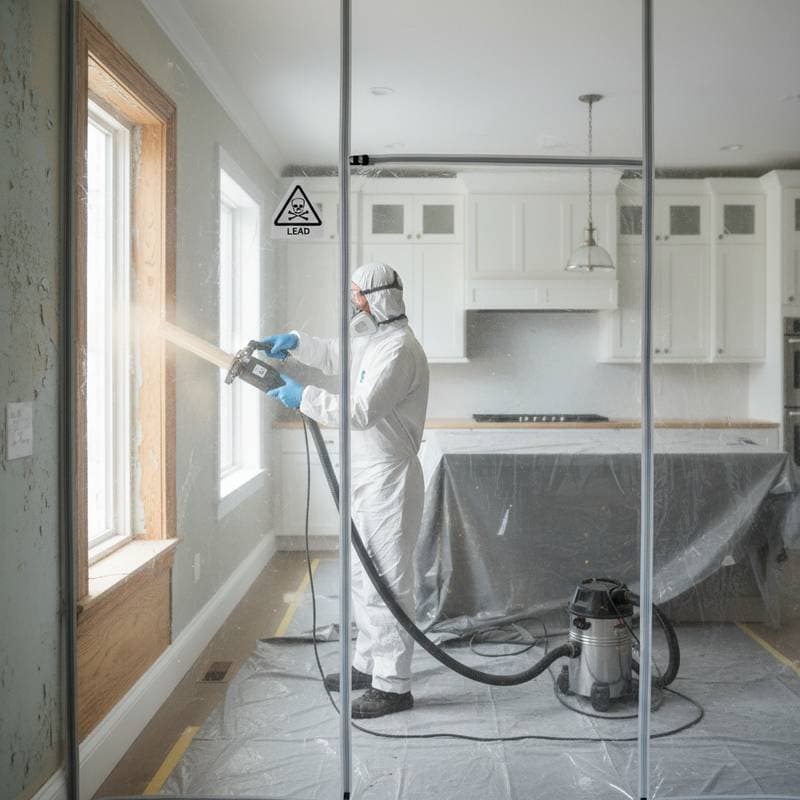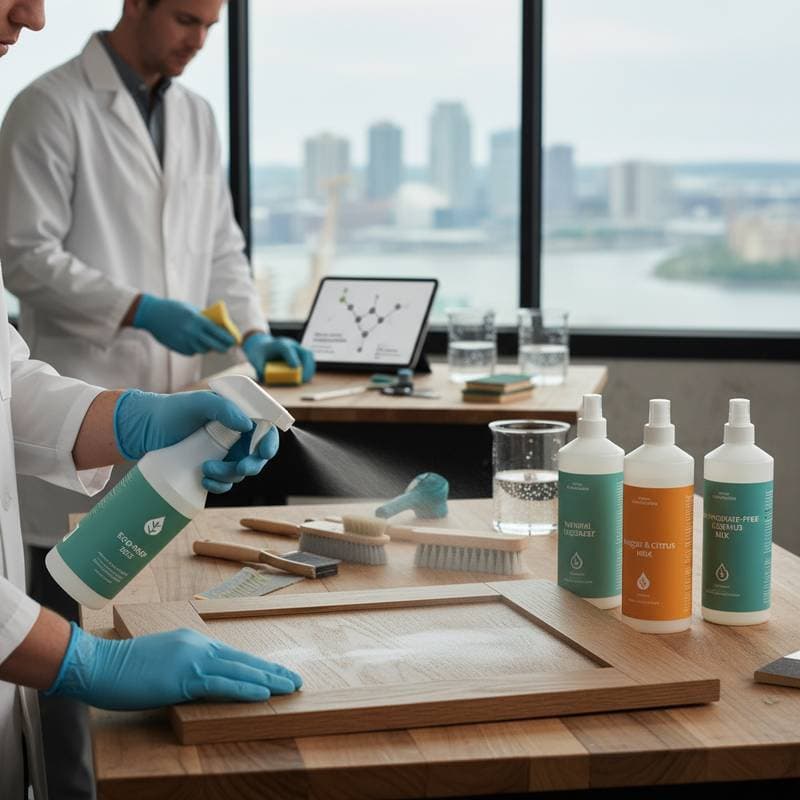The $800 Sanding Error DIY Painters Make That Destroys Finishes
A paint job may appear flawless from a distance, yet reveal ridges, dull areas, or irregular gloss upon closer inspection. This issue often stems from the $800 sanding error, where inadequate preparation turns a promising project into an expensive correction. Professional painters encounter this problem frequently. The solution lies in understanding the error and applying correct techniques to ensure success.
Understanding the $800 Sanding Error
The $800 figure represents the approximate cost to repair a medium-sized room after faulty sanding damages the surface. This expense includes materials for stripping, priming, and repainting, plus the labor involved. The problem occurs during preparation, before any paint application. Improper sanding leads to uneven absorption, poor adhesion, or swirl marks that become prominent under paint layers.
The core error involves over-sanding or under-sanding the surface. Both approaches impair readiness for coating. Many DIY painters assume that maximum smoothness benefits the finish, but paint requires a slight texture for proper grip. Excessive sanding creates a glossy surface that repels paint, while insufficient sanding leaves roughness, residue, or contaminants that prevent bonding. In either case, the outcome appears substandard and deteriorates quickly.
The Importance of Sanding in Paint Preparation
Sanding serves more than mere smoothing; it establishes the ideal micro-texture for paint and primer adhesion. Consider it analogous to preparing skin for cosmetics: improper exfoliation results in uneven application and accentuated flaws. The principle applies similarly in painting.
Professionals refer to this process as surface conditioning. For drywall, trim, or cabinetry, sanding regulates gloss, corrects minor defects, and promotes uniform absorption. Neglecting or overdoing it produces blotchy pigmentation, delamination, or strokes that fail to level. Paint amplifies underlying imperfections, transforming subtle issues into obvious defects after drying.
Selecting the Correct Grit Sequence
Sandpaper grits function like steps in a progressive process. Using the incorrect grit at any stage disrupts the overall result. Each level performs a distinct role:
- Coarse grits (40 to 80): Remove heavy paint or varnish efficiently. Suitable for rough wood or damaged walls, though they produce deep scratches.
- Medium grits (100 to 150): Level filler or spackle, prepare new wood, and address minor unevenness.
- Fine grits (180 to 220): Provide final smoothing before priming or between coats.
- Extra-fine grits (320 to 400): Polish between topcoats or prepare existing glossy surfaces.
The $800 error frequently arises from bypassing intermediate steps. Transitioning directly from 80 grit to 220 grit may seem time-saving, but it conceals scratches that paint cannot conceal. Progress through grits incrementally to achieve gradual refinement. Shortcuts undermine the process here.
Choosing and Using Tools Effectively
Hand sanding suits small areas, but larger surfaces demand uniform effort. Random orbital sanders or sanding sponges enhance efficiency and minimize exhaustion, provided they receive proper handling. Dwelling in one spot risks burning the material, resulting in glossy areas that resist paint. Excessive pressure creates depressions visible later as matte circles.
A technique gained from set construction involves allowing the tool to operate without force. Move it in overlapping patterns, similar to systematic coverage in landscaping. Apply light pressure with consistent motion across the entire area. Evaluate progress using sidelight at an oblique angle. Uniform reflection indicates success; varying sheen requires additional blending for consistency.
Managing Dust as a Critical Step
Flawless sanding proves ineffective if dust remains. Dust interferes with paint, creating pinholes, craters, or delamination. Vacuum thoroughly and follow with tack wiping prior to coating. A microfiber cloth lightly moistened with denatured alcohol excels on trim and furniture. For walls, a damp mop attachment on an extension pole removes particles more effectively than dry methods.
Dust management also protects health. Fine particles irritate respiratory and ocular systems. Use a mask and safety glasses. Ensure adequate ventilation in the work area. Prioritize safety alongside quality.
Preparation Options Across Budget Levels
Practical approaches exist for various budgets. Surface preparation succeeds regardless of expenditure when executed thoughtfully.
Low-Cost Method:
Employ basic sandpaper sheets with a sanding block. Begin at 120 grit and advance to 220 grit. Clean using a damp cloth and allow complete drying before painting. Effort yields impressive outcomes.
Moderate Investment:
Acquire a variable-speed palm sander equipped with a dust collection bag. Opt for mesh pads that prevent clogging. Conclude with a tack cloth and primer sealer. This combination accelerates work and improves evenness.
Professional Setup:
Select a random orbital sander featuring built-in dust extraction. Pair it with vacuum-compatible discs and complete cleanup using a HEPA-filtered vacuum. Such equipment delivers the smoothest, dust-free foundation, ideal for spray applications or high-sheen paints.
Each method delivers results when aligned with the project scale and available time.
Avoiding Frequent Sanding Errors
Recognize these common pitfalls to prevent issues.
- Over-sanding glossy areas, which burnishes rather than dulls them, leading to paint slippage. Apply deglosser or scuff gently with 220 grit.
- Omitting primer post-sanding, leaving exposed pores unsealed and absorption inconsistent.
- Relying on a single grit throughout, which neglects the need for staged refinement and results in streaks.
- Failing to clean between grit changes, allowing coarse residue to mar finer passes.
- Sanding moist filler or caulk, which spreads material and disrupts texture. Permit full curing first.
- Hastening the process, producing swirls that paint highlights.
Maintain a reference list at your workspace to guide efforts and reduce errors.
Correcting the Sanding Error
If the error has already occurred, recovery remains possible without full demolition.
- Diagnose the problem. Peeling indicates adhesion failure; blotchiness suggests uneven absorption; irregular shine points to surface inconsistencies.
- Sand lightly once more using 220 grit or finer to even the area without excessive removal.
- Clean meticulously with vacuuming and tack cloth application.
- Apply a bonding primer to enhance adhesion over compromised layers.
- Repaint using consistent strokes, maintaining adequate material on the tool and a continuous wet edge.
An additional coat may prove necessary, but uniformity returns without complete stripping.
Insights from Professional Practice
In fast-paced environments like television production, precision in sanding ensures surfaces withstand scrutiny under intense lighting. Teams coordinate tasks: one sands, another removes dust, a third applies primer. They monitor sheen variations to avoid reflective anomalies. Apply this vigilance at home by inspecting under angled illumination pre-painting. Shadows expose flaws more readily than direct views.
During one production, over-sanding a prominent panel created mirror-like spots after painting, visible under studio lights. The team re-sanded, primed, and recoated overnight. This incident highlighted sanding as a visual and tactile art, shaping light interaction on the surface. Mastery elevates even economical paints to premium appearances.
The Value in Professional Preparation
Painters factor sanding into pricing because it determines overall quality. Preparation constitutes a significant portion of the work. Inadequate effort leads to revisions, guarantees, and dissatisfied customers. Experts employ sequenced grits, dust control, and substrate-specific primers. This approach provides enduring value.
For DIY enthusiasts developing services or renovating properties, sanding proficiency enhances durability, extends intervals between repaints, and builds credibility. Clients perceive quality through tactile smoothness, prioritizing execution over speed. Refined texture signifies expertise.
Essential Techniques for Optimal Results
Replace sandpaper frequently; dull edges abrade rather than refine. If the surface on the paper gleams, discard it.
Mark areas lightly with pencil before starting. Uniform erasure confirms complete coverage.
Vacuum equipment alongside surfaces to eliminate dust from mechanisms that could redistribute it.
Select primers appropriately: stain-blocking for wood, water-based sealers for drywall.
Assess by touch; glide fingers across the material with eyes closed to detect subtleties vision might overlook.
Mastering these elements ensures paint adheres securely, appears uniform, and endures, transforming routine projects into professional achievements.



